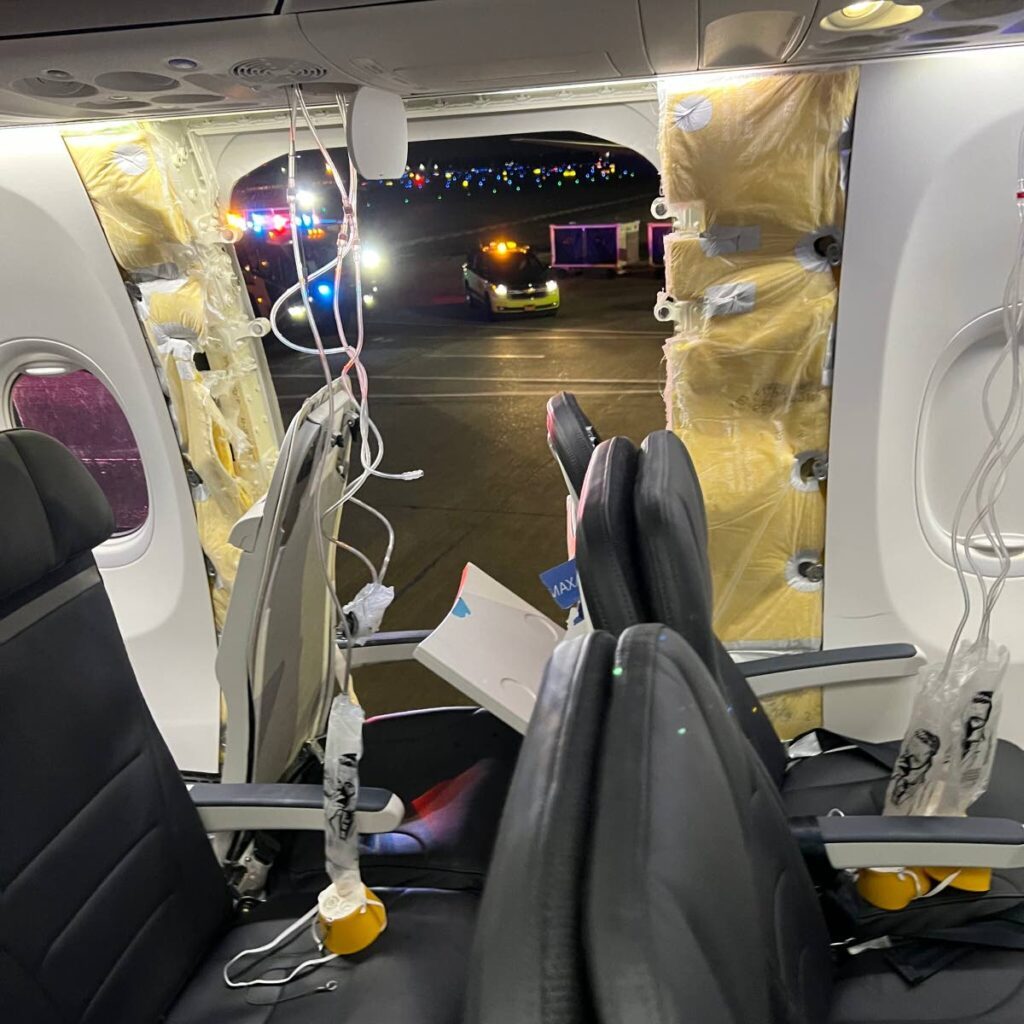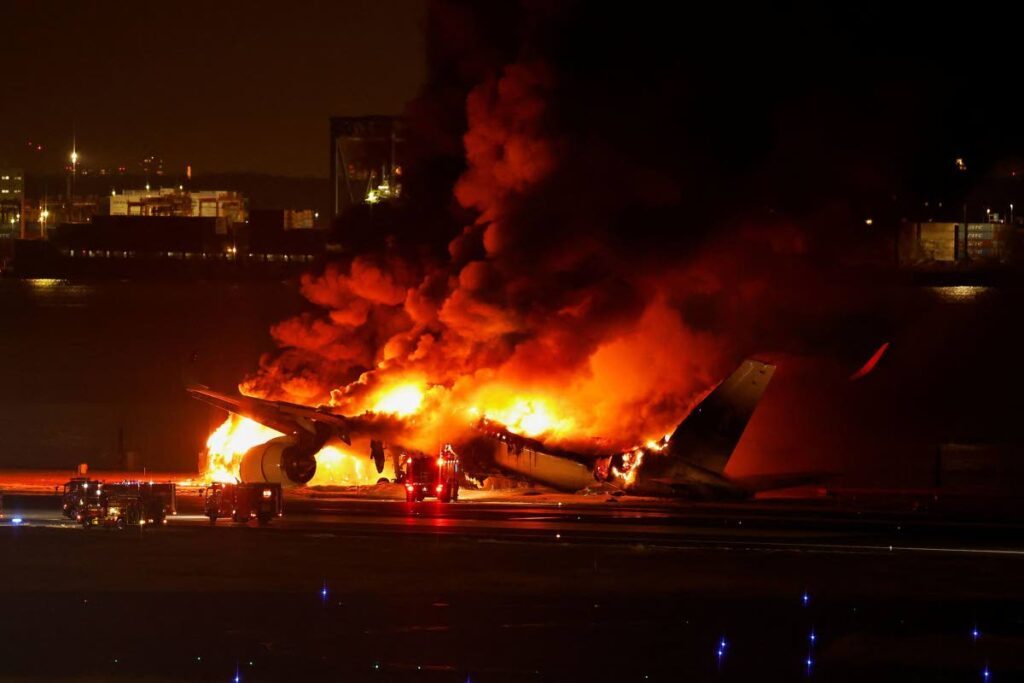Importance of airline passenger safety briefings

Two very recent aviation accidents underscore the vital importance of airline passenger safety briefings.
The first accident occurred on January 2, at Haneda Airport in Tokyo, Japan, when an Airbus A350-941 aircraft operating Japan Airlines Flight 516 collided on landing with De Havilland Canada Dash 8 aircraft operated by the Japan Coast Guard. The Coast Guard aircraft was on the active runway at the time of collision.
Both aircrafts caught fire, and five of the six crewmembers on board the Dash 8 died. All 367 passengers and 12 crew on the A350 survived.
Japan Airlines Flight 516 departed New Chitose Airport at Sapporo on a domestic flight to Haneda Airport. The flight landed after dark with visibility greater than ten kilometres.
According to a JAL spokesman, the three pilots felt a sudden shock immediately after landing and lost control of the aircraft while trying to maintain its course along the runway. They were unaware that a fire had broken out on board until they were informed by a cabin attendant that the left engine was on fire. The three JAL pilots confirmed they had not seen the Coast Guard aircraft on the runway.
The Japan Coast Guard aircraft, carrying six crew members, was taking supplies to an airbase in Niigata in response to the 2024 Noto earthquake, which had occurred the day before.
The Coast Guard aircraft was stationary on the runway for around 40 seconds before the collision. The captain, who survived the collision with injuries, reported that the back of the aircraft suddenly caught fire shortly after he had increased the engine power before exploding following the collision.

The captain claimed he had entered the active runway because he had received ATC takeoff clearance.
However, transcripts of the air-to-ground communications from the control tower indicated that the JAL aircraft received clearance to land on runway 34R, while the Coast Guard aircraft was instructed to hold short of the runway at a holding point on taxiway C5.
Both aircrafts became fireballs, and the survival of all aboard the A350 was miraculous. With the right engine still running, all 367 passengers and 12 crew members onboard JAL516 evacuated through three of the plane's eight evacuation slides, located at doors 1L, 1R and 4L.
JAL said the plane's in-flight announcement system had failed, leading the crew to give instructions through megaphones or by shouting.
Eight children were on board. 14 people on board suffered minor injuries, four of whom were taken to hospital.
It was noted that all passengers exited without hand luggage, a factor that facilitated a smoother evacuation. Another factor cited in the survival of those on board was that the aircraft, one of the first commercial models to be made of composite carbon fibre materials, appeared to have withstood the initial impact of the collision and fire relatively well. The plane was fully evacuated 18 minutes after landing. The captain was the last person to leave the plane.
This accident is under investigation by the Japan Transport Safety Board as the lead investigation agency. Other agencies from France, the UK, Canada and the US are assisting in the investigation. On completion of the investigation, a final report will be issued listing the most probable causal factors.
The second accident occurred on January 5, involving Alaska Airlines Flight 1282 operated by a Boeing 737 MAX 9 on a scheduled US domestic flight from Portland International Airport in Oregon to Ontario International Airport in California.
Flight 1282 took off with six crew members and 171 passengers aboard. Approximately six minutes after takeoff, a factory-installed door plug, filling the port-side opening for the optional emergency exit door separated from the airframe, causing an uncontrolled decompression of the aircraft. The aircraft's oxygen masks were deployed during the accident.
According to reports, nobody was in seat 26A, which was immediately next to the opening created by the blowout. Three passengers experienced minor injuries that required medical attention, and some passengers' items were lost when they flew out of the opening.
Alaska Airlines initially grounded their 737 MAX 9 fleet of 65 and returned 18 to service the next day after determining that those 737 MAX 9s had already had their door plugs inspected "as part of a recent heavy maintenance visit."
On January 6, the Federal Aviation Administration (FAA) issued an emergency airworthiness directive (EAD) that required the grounding of all Boeing 737 MAX 9 aircraft with a mid-cabin door plug installed pending inspections and required corrective actions. Alaska Airlines subsequently removed the 18 aircraft from service again. Several airlines that operate the MAX 9 also grounded their fleet for inspection, including United Airlines, Turkish Airlines, Copa Airlines and Lion Air.

The National Transportation Safety Board (NTSB) is currently investigating this accident.
Both accidents have a common survival theme.
In the JAL accident, all passengers obeyed the cabin crew's instructions to evacuate without hand luggage which would have impeded egress from the aircraft.
In an accident involving a fire, every second can make a life-saving difference.
In the Alaskan Airlines accident, all passengers were able to quickly don the overhead oxygen masks which were deployed after the rapid decompression.
Passengers seated near the door plug that blew out had their seat belts fastened securing them to the aircraft's main structure.
On May 2, 1970, a DC-9-33F jet aircraft made a sea ditching in shark-infested waters 30 miles northeast off St Croix, US Virgin Islands due to fuel exhaustion. 23 people on board, including a stewardess and an infant did not survive. The majority of passengers who perished were unable to don their life jackets in time and either drowned or were attacked by sharks.
Therefore, it is of vital importance for all passengers to pay close attention to the safety briefings before every departure of an aircraft.


Comments
"Importance of airline passenger safety briefings"